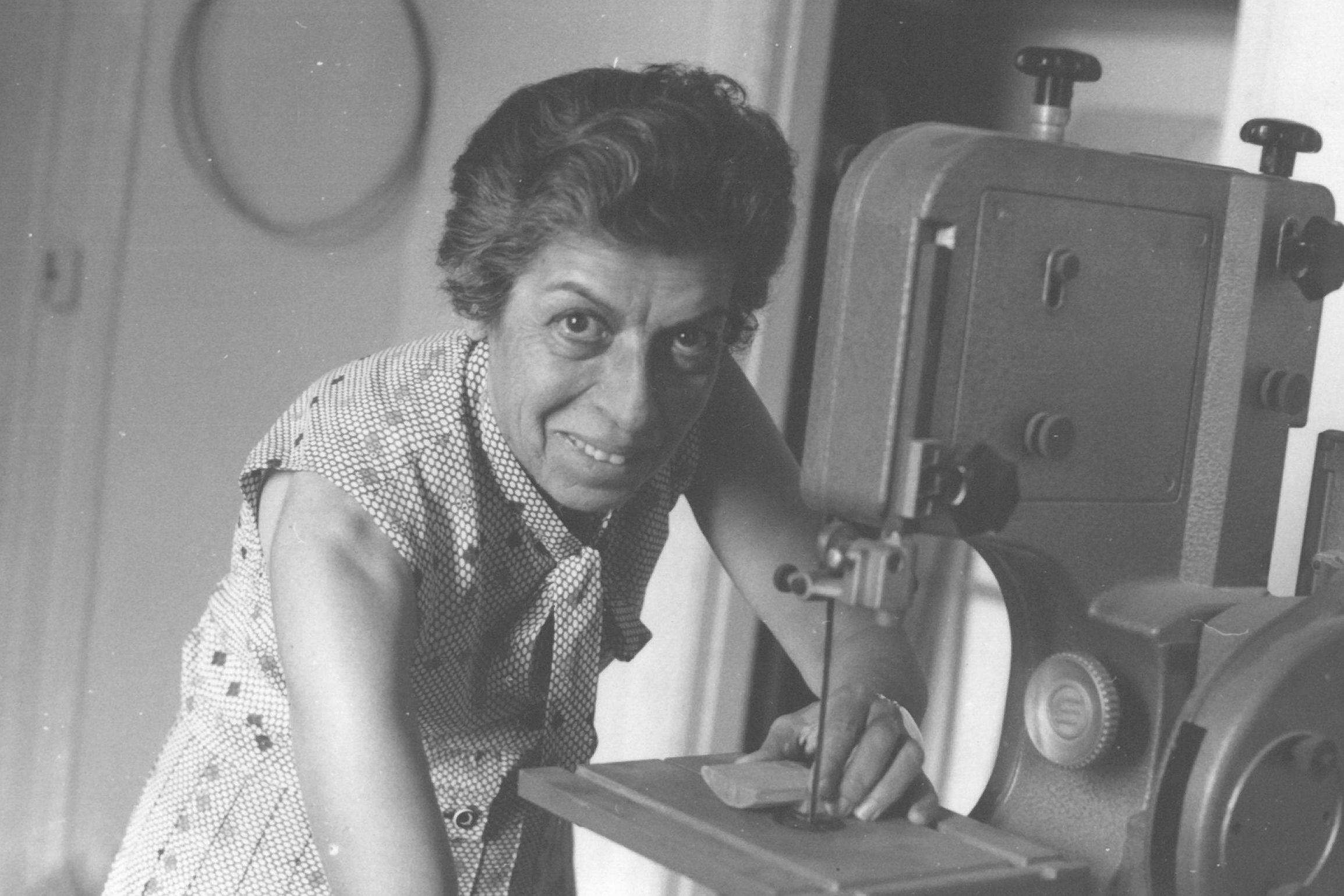
MUSEUM FOR PIONEERING ARTIST SALOUA RAOUDA CHOUCAIR OPENS IN LEBANESE MOUNTAINS
Those familiar with the Middle Eastern modernist movement will know the work of the late Lebanese artist Saloua Raouda Choucair, her trailblazing approach to abstraction and her unique blend of western and Islamic aesthetics.
Now, in the verdant Metn mountains of Lebanon, a museum dedicated to her artistic legacy has opened. The Saloua Raouda Choucair Museum, inaugurated on what would have been the artist's 108th birthday, showcases her prolific works across many mediums and her personal archives. It offers insights into her thought processes and the cultural and historical contexts that influenced her work.
The project has been spearheaded by the foundation created in the artist’s name, run by her daughter Hala Schoukair.
“Despite being born and raised in Beirut, my mother was always enchanted by the transparency of the pine tree forest,” Schoukair tells The National. “And when she first visited this plot where we stand today, she was so inspired by its trees, plants, and rocks, and immediately designed a plan for it.|
“So here we are, many years later, inaugurating a museum on this same land that will allow my mother’s art to be admired by generations to come. The country has many crises right now, and there is war next door, so it’s a difficult time, but I still wanted to have this positive thing and to keep art alive, to give hope to us,”
Born in Beirut in 1916, Choucair travelled to Paris for three years in 1948, where she studied with Fernand Leger, and played a pivotal role in the establishment of Atelier de l’Art Abstrait (Abstract Art Workshop), led by Edgard Pillet and Jean Dewasne.
She was also among the first Arab artists to display works at the Salon des Realites Nouvelles in 1951, marking her as a significant figure in the global modern art movement. Her works have since become part of the permanent collections of major museums around the world, such as the Metropolitan Museum of Art, Tate Modern and Sharjah Art Foundation.
As a young artist, her work was known to the regional cultural scene and select European circles, but her international acclaim was achieved later in life. For example, in 2013 the Tate Modern held the first international retrospective of Choucair's work.
“Her art was her life. She was completely devoted to it. She took inspiration from everything around her, especially nature and science – how things are formed and how abstraction could be seen in these things,” Schoukair says. “She would read physics, mathematics, philosophy and Arabic poetry and was fascinated by the construction of the Arabic language and how a poem was formed.
“Her main inspiration, however, was the essence of Islamic art and the capacity for modernism in the Islamic art that grew in the 20th century."
A trip to Cairo in 1943 was the genesis of her interest in Islamic art. After spending months visiting mosques and historical monuments, she began to see the lack of depiction of images – animals, people, landscapes – as the true meaning of abstraction, completely removed from the western approach that is commonly thought of.
Her work began using Arabic language and geometry blended with modernist trends, resulting in organic shapes and curves that contrasted with blocky structures and solid colour patches. Her sculptures often reflect the concept of infinity and the interconnectedness of forms, drawing inspiration from Sufi philosophy and Arabic poetry.
The museum houses around 600 pieces of her work, with 500 on display, showcasing Choucair’s versatile use of terracotta, wood, stone, fibreglass, brass, bronze, aluminium, plexiglass and stainless steel. The collection also includes her innovative creations in furniture, carpets, plates and jewellery, underscoring her belief that art should be intertwined with everyday life.
Designed by Lebanese architect Karim Bekdache, the museum pays tribute to the artist’s love for nature, built in harmony with the topography of the area. The halls have been built between the natural breaks in the pine trees, rather than removing them, and a sculpture garden allows her works to play off their verdant surroundings. The museum is also built on stilts and raised above the ground, to have the lowest possible impact.
“I would also like students and researchers to visit, or people who are really interested in developing the history of our art. Her work is part of the Arab world’s cultural heritage and there are still questions about her work that are unanswered,” Schoukair says.
“What's interesting in the museum is that you can see all her work together, from her early studies on the trajectory of the line, to when she worked with repetition of shapes. They all speak to each other and are really in harmony, despite being so different at the same time.”
Saloua Raouda Choucair Museum is open by appointment. More information is available here salouaraoudachoucair.com
2024-07-05T03:21:19Z dg43tfdfdgfd